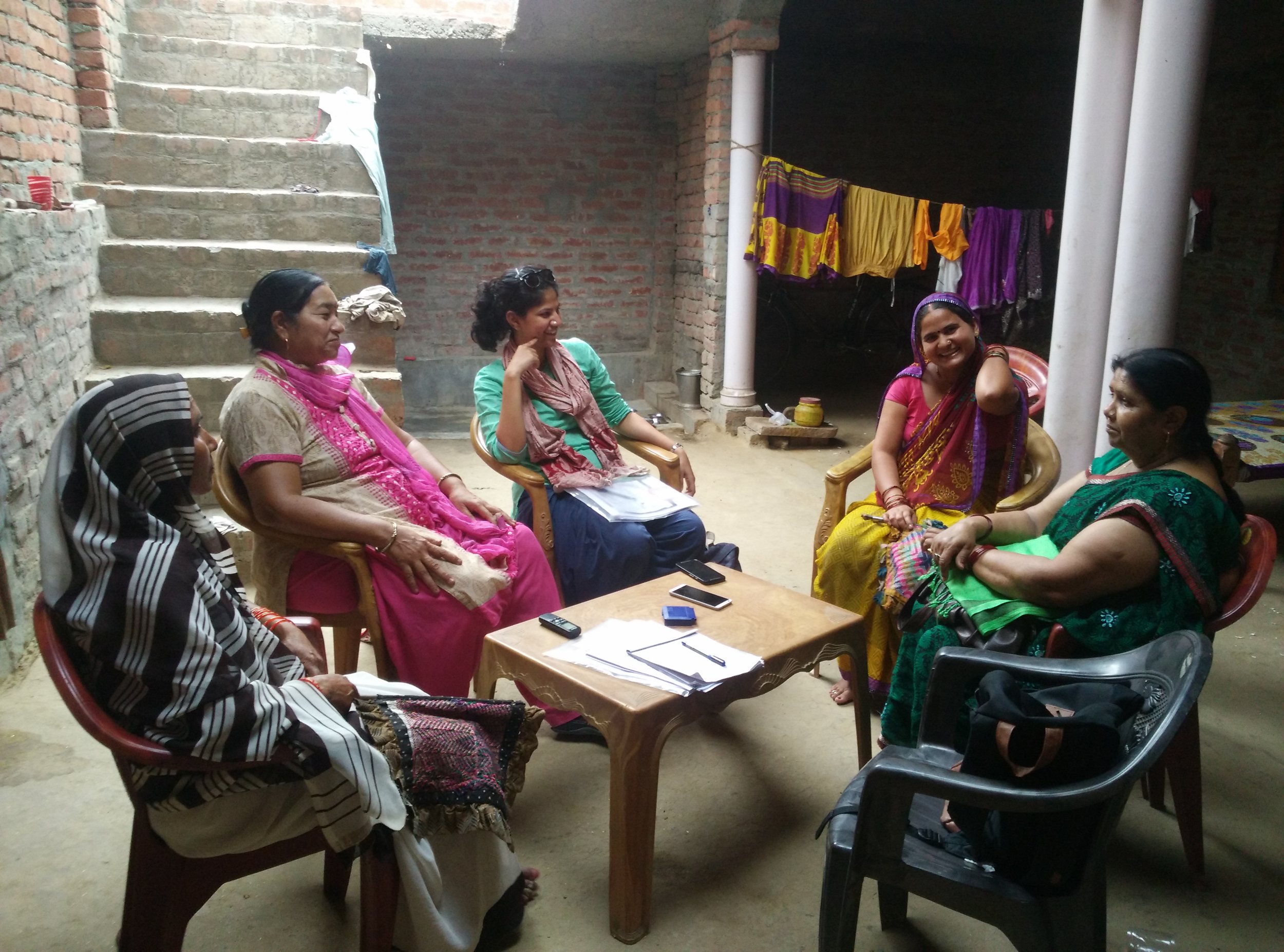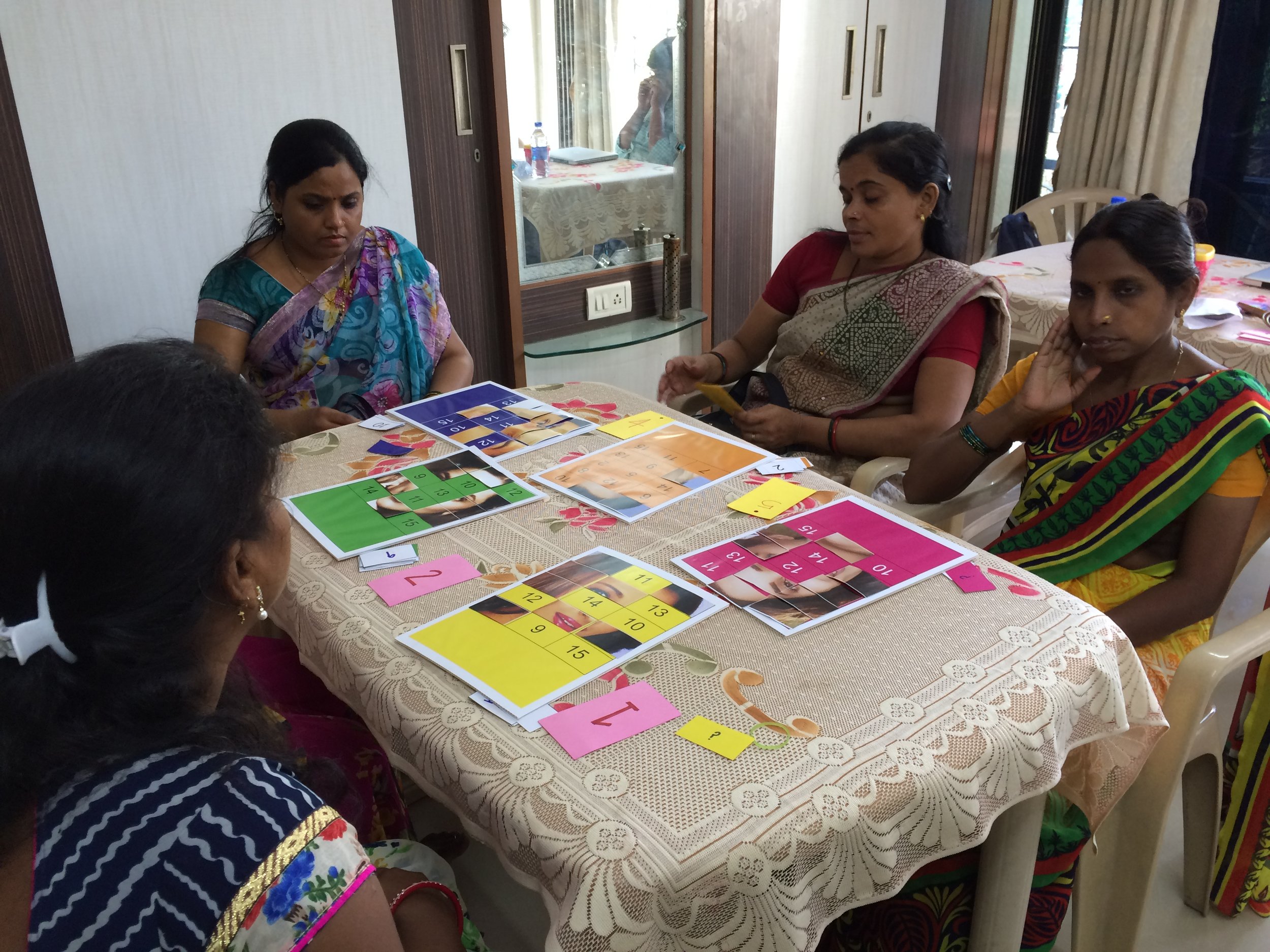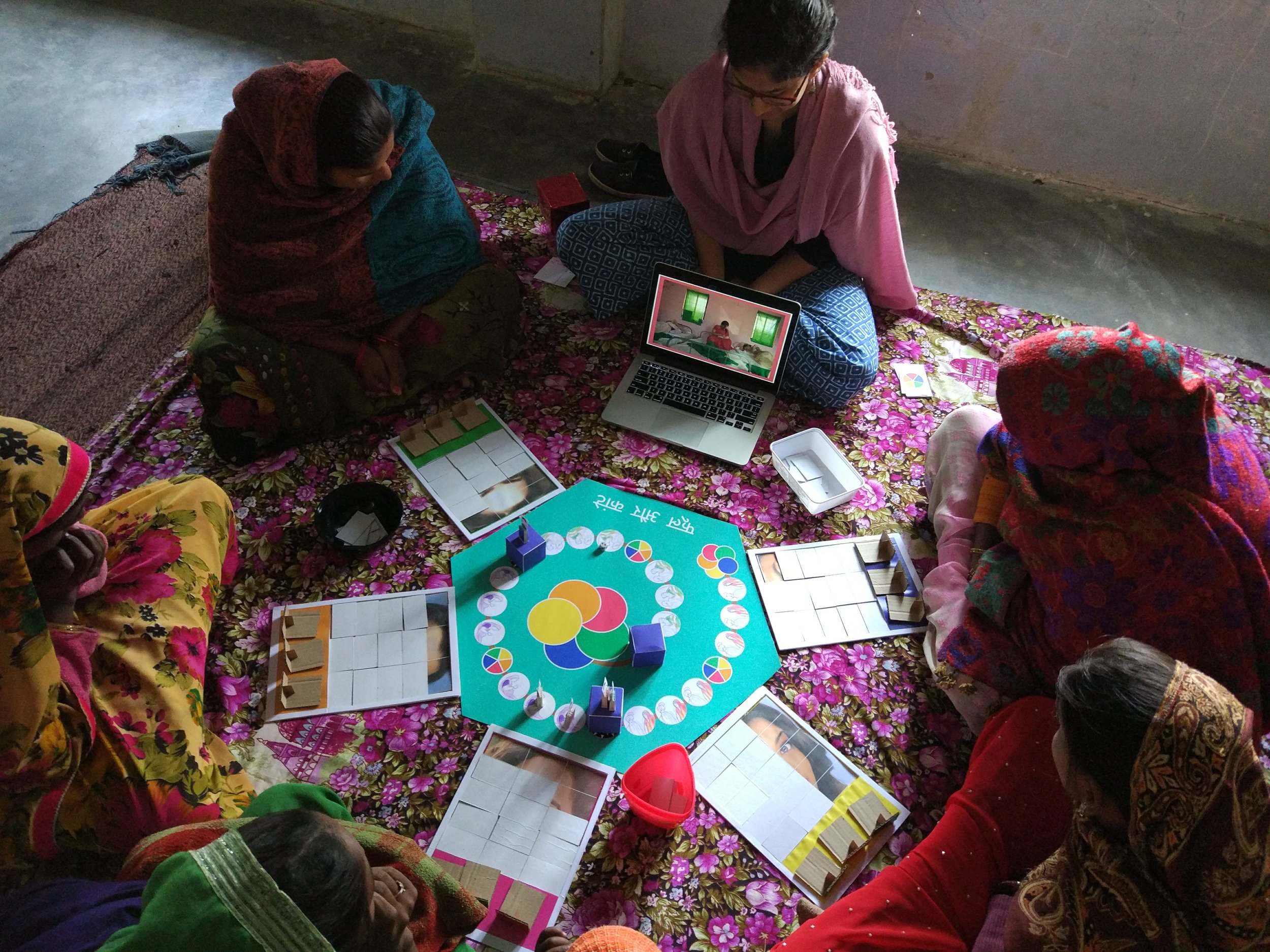INFLUENCING REPRODUCTIVE HEALTH HABITS
How might we influence habits to decrease maternal & infant mortality rates?
Reproductive Maternal Neonatal & Child Healthcare + Adolescents (RMNCH + A) is the Indian Government's National Health Mission to reduce maternal and infant mortality rates across the country. This project, set in rural Uttar Pradesh focuses on six mini journeys that address crucial behaviors of the four stakeholders of this massive system: households (women + family), facilities (government hospitals), front-line workers (government social activists), and program managers (bureaucrats of the state and national healthcare systems).
primary research
We spent over two weeks in the field speaking with the four main stakeholders of the system to understand their key behaviors & mental models in the following six mini journeys:
- Family planning and contraception
- Iron Folic Acid supplements
- Safe delivery
- Baby Survival
- Exclusive breastfeeding
- Healthy baby
The labor room in a Community Health Center
Having an older lady moderate the interviews was a big plus as the women and mothers-in-law felt more comfortable talking about these sensitive issues
The Village Health Nutrition Day also takes care of child immunization & antenatal chech-ups. Here, an ANM (auxiliary nurse midwife) is conducting a blood test to check for anemia
Every area has a group of 3 social workers supporting them: ASHA (Accredited Social Health Activist), ANM (Auxiliary Nurse Midwife), AWW (Aanganwadi Worker)
Every month, the ASHAs meet to get help filling their registers (this data feeds the national data systems to help build stats and indicators) and to get their payment vouchers
research synthesis
Combining the secondary research and primary research led to an immense amount of information. Working in a complex system layered with politics, governmental, and strong culture and tradition led country, it was important to find a clean visual way to understand the information.
Since behavior change addresses the "awareness - action gap", our diagram used it as a filter to explain how we got to our key focus areas of study
A systems diagram showing the connections between the behaviors, infrastructure and observations -- that lead to key focus areas of study
validating hypotheses - a research lab through gamification
The research synthesis led us to several hypotheses that could serve as underlying reasons for user decision making and habits. To validate and / or negate these hypotheses, a gamified format was used to open discussion among users. The questioning format of the game was stretched at length to create utmost comfort for our user group. Several iterations of a board game to develop ways to: (a) make sure users understand our questions (b) users feel incentivized enough to be engaged in the game (c) the game provides enough fodder for a rich discussion.
ROUND 1: Check to see if the ladies are comfortable with dice and counters using a simple and traditional game of snakes & ladders
ROUND 2: Getting crafty & testing the game in office with coworkers
Testing version 1 on field, by incorporating mini-games within the larger game to increase player engagement
ROUND 3: Using coins as leaderboards to show open scoring in hopes of increasing competition
ROUND 4: Testing pareidolia as an engagement strategy which proved successful (when using Bollywood actors!)
Brainstorming how the board can incorporate 5 players and to test ways of incentivization by using coins and monopoly money
Local fun games continued to remain part of the process. These moments during the longer game got the ladies to open up more.
ROUND 5: Combining a close final version of the board with pareidolia (as points in the game) and video for question formats.
Final Board Game
During our initial round of research, we had found local moderators to be very useful -- not only were they well versed in interviewing, users were much more willing to open up to someone who spoke their local dialect, and someone of older age because the project space was a taboo issue. For the gamified research, we decided to bring the moderators back on board and have them run the games and discussions. We spent a week with them in our offices and on field, with several de-brief sessions to help them understand the game and try different ways of running, This intensive week turned out to be most useful where we did 4 more rounds of iterative prototyping to alter discussion formats, game length etc.
Training moderators in office
Running a version of the game with husbands who are a key part of the household & therefore a key decision maker
Almost every woman brought their newborn baby along, and this made it difficult for them to manoeuver the gameplay. So, we prototyped a game without the main board, to increase their comfort
Moderators running the game on-field.
After three days of on-field training, we got the moderators to share their best practices and pain points as a team building exercise -- and gather tips that they could take back on field























